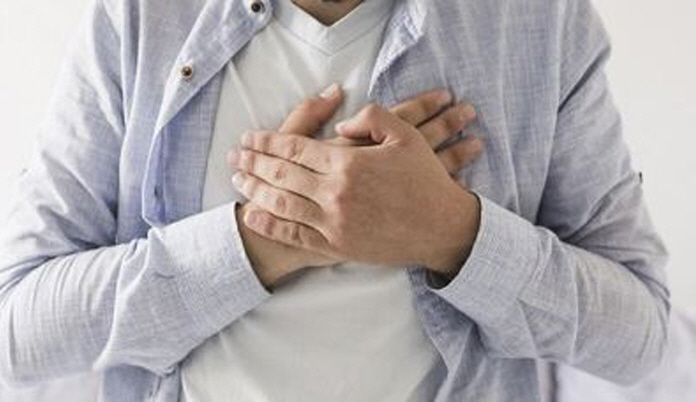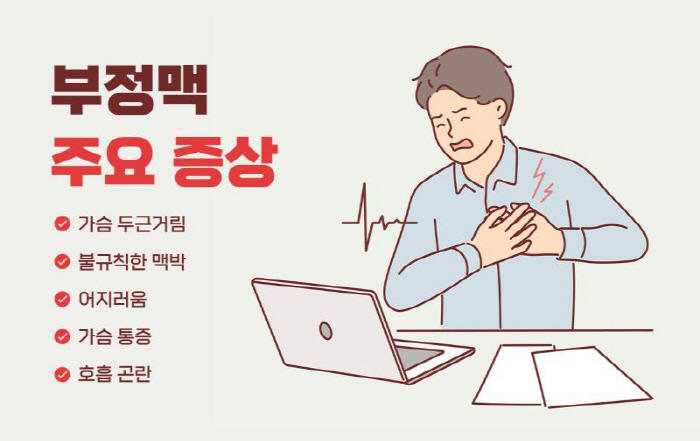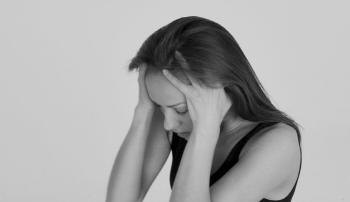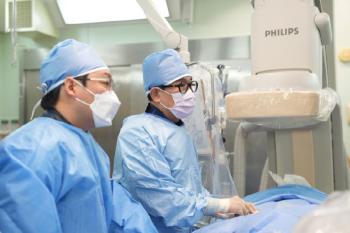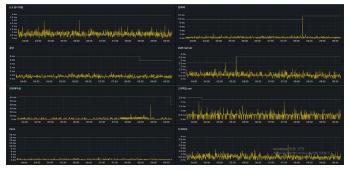Arrhythmia Threatening Young Hearts...Deadly cardiac arrest if left unattended
Sep 24, 2025
|
Heart disease is a fatal disease that is considered the second leading cause of death in Korea after cancer. Among various heart diseases such as myocardial infarction, angina, and heart failure, the number of arrhythmia patients has been steadily increasing recently.
According to the Health Insurance Review and Assessment Service, the number of arrhythmia patients in Korea increased 25% in five years from 378,822 in 2018 to 463,538 in 2022. In particular, the proportion of young patients in their teens and 30s increased by about 30%, the highest increase among all age groups.
Kim Min-sik, director of the Department of Circulatory Medicine at Himchan General Hospital in Incheon, explained, "Arrhythmia is a case of irregular heart pulses, and there are not dangerous arrhythmias, but there are also dangerous arrhythmias." "Young people tend to attribute arrhythmia symptoms such as palpitations and dizziness to simple fatigue or stress, but fatal arrhythmias such as ventricular tachycardia can lead to sudden death without time to predict."
◇ Arrhythmia that causes cardiac arrest, 'Stress and lack of sleep' Risk for young people
Arrhythmia is a disease in which the heartbeat rhythm is abnormal beyond the normal heart rate of 60 to 100 times per minute. It is divided into tachycardia, which speeds up the pulse to more than 100 times per minute, bradycardia, which slows down to less than 60 times per minute, and atrial fibrillation with irregular rhythms.
The causes of arrhythmia are diverse, including genetic diseases, myocardial infarction, heart diseases such as valve disease, autonomic nervous system abnormalities, and drugs. The risk of arrhythmia increases as heart cells that deliver electrical signals to the heart are damaged. The recent increase in young arrhythmia patients is estimated to be closely related to lifestyle habits such as stress, lack of sleep, and excessive caffeine intake. Chronic stress affects the heart rate by excessively activating the sympathetic nervous system, breaking the balance of the autonomic nervous system. In addition, the high content of caffeine in coffee and energy drinks can directly stimulate the heart, causing an abnormal heartbeat.
A typical symptom to suspect arrhythmia is heart palpitations. Symptoms such as irregular or faster pulse rate, chest pain, chest discomfort, dizziness, shortness of breath, and fainting may also occur. These symptoms often appear and disappear intermittently, and there are no obvious symptoms of self-awareness, leading to a heart attack or sudden death.
◇ If left unattended, it will cause fatal cardiac arrest...The risk of stroke is five times higher
Arrhythmia that can cause cardiac arrest can cause a sudden stroke after having no symptoms. Atrial fibrillation causes blood clots because blood cannot be properly discharged from the atrium. When this blood clot travels to the brain, it causes a stroke, and atrial fibrillation-induced strokes are much more fatal than normal strokes. Severe neurological sequelae such as quadriplegia can occur.
According to the Korean Stroke Association, patients with atrial fibrillation have about five times higher risk of stroke than the general population.
If arrhythmia affects heart structure or function, it may progress to heart failure. In particular, the risk is doubled for the elderly or those with underlying diseases such as high blood pressure, diabetes, and heart disease. In addition, malignant arrhythmia, such as ventricular tachycardia or ventricular fibrillation occurring in the ventricle, is the most common cause of sudden death. When a person dies of a sudden heart attack at a young age, most of them are caused by such malignant arrhythmia. Experts warn that heart attacks sometimes have no symptoms in advance, but many show signs of arrhythmia or myocardial infarction. Therefore, if symptoms such as chest pain, shortness of breath, and dizziness appear repeatedly, you must seek a specialist's diagnosis.
If arrhythmia is suspected, the first test to be performed is an electrocardiogram. It is a test to check the flow of electricity in the heart by attaching electrodes to the body. If symptoms are short and intermittent, a halter test is performed to record the heart rhythm for more than 24 hours. In addition, exercise load tests and echocardiography are also performed to check for structural abnormalities in the heart. In patients with atrial fibrillation at high risk of stroke, anticoagulant administration may be necessary. Accurate diagnosis is very important in determining future treatment directions for patients.
Manager Kim Min-sik emphasized, "Arrhythmia is easy to leave because the initial symptoms appear vague and irregular, but if detected early, it can be sufficiently managed with medication or procedures." "If you have a history of heart disease or sudden death in your family, it is important to check your blood vessel health and heart condition regularly even at a young age."
|
This article was translated by Naver AI translator.
